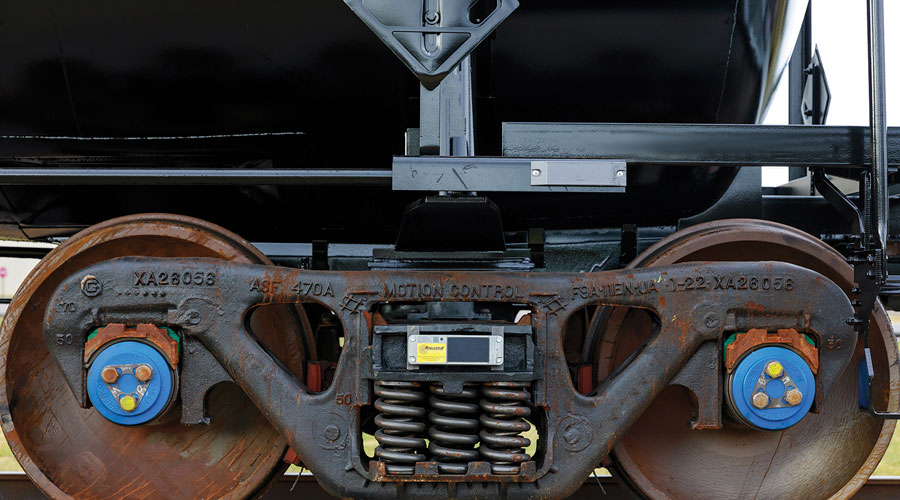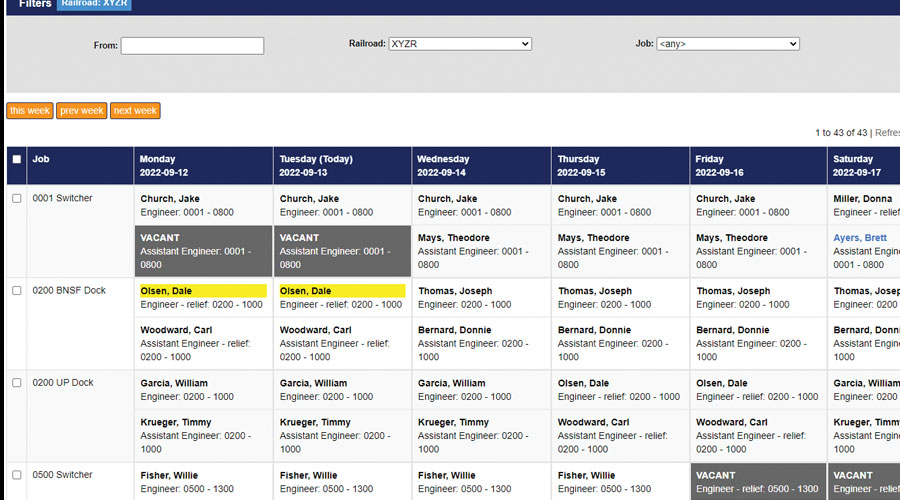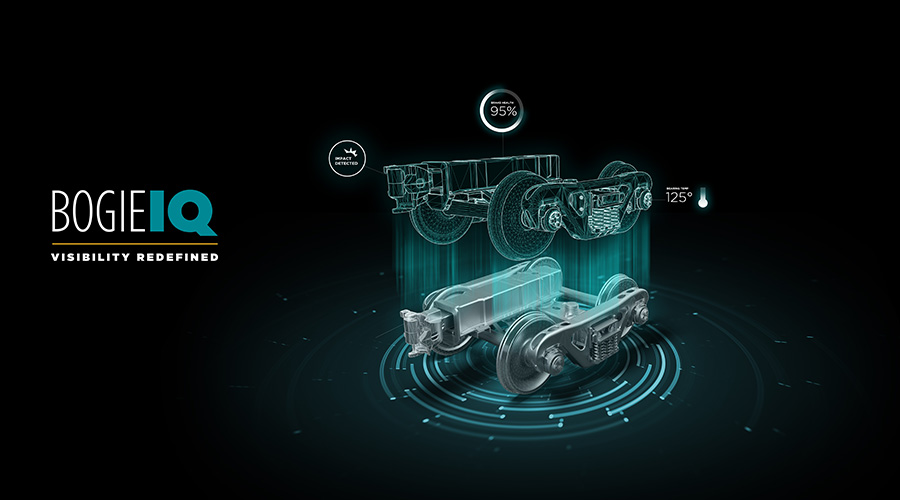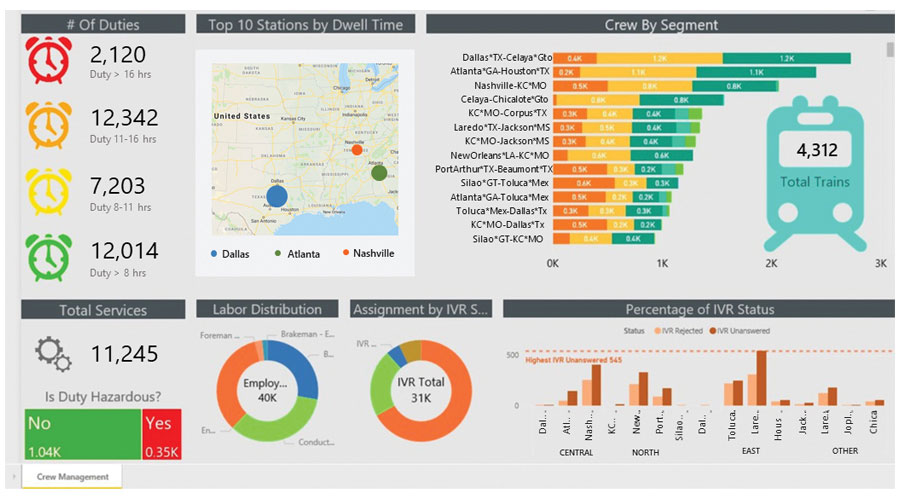Stay updated on news, articles and information for the rail industry
February 2021
Rail News: Internet-Digital
Data gathering: University of Delaware’s virtual Big Data conference convened experts on emerging analysis techniques
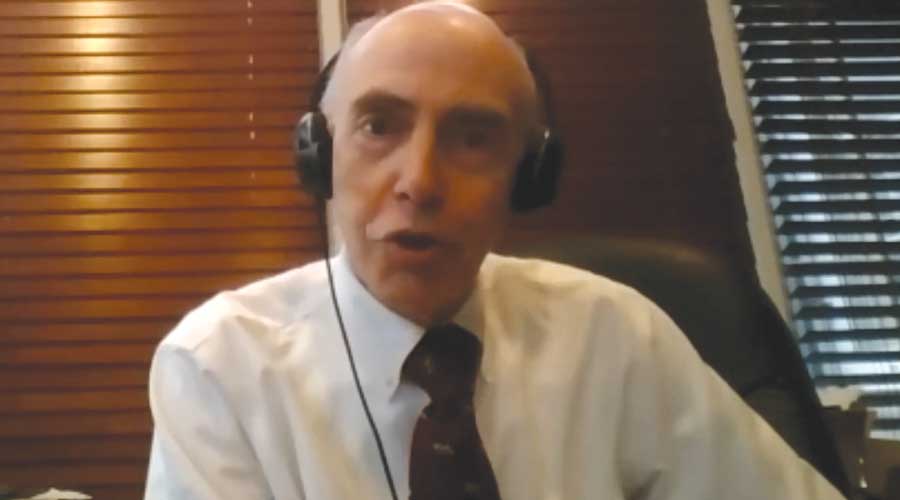
By Jeff Stagl, Managing Editor
More than 40 railroads finished implementing positive train control at 2020’s end. Those systems will help significantly boost safety on their networks and greatly generate more data, such as train locations and asset conditions.
That’s both a good and bad problem for railroads to have: much more data to prompt better business decisions but too overwhelming an amount of it to adequately manage.
Railroads need to convert mountains of data into usable intel to help them plan and carry out capital programs, manage assets and maintain infrastructure. Enter Big Data, which involves going beyond traditional analysis techniques to more efficiently process information.
For the past seven years, the University of Delaware has held a conference annually to focus on Big Data. The university’s railroad engineering and safety program conducts research on freight- and transit-rail engineering, safety and operations.
Titled “Big Data in Railroad Maintenance Planning,” the 2020 conference was held Dec. 16. Conducted virtually for the first time because of the pandemic, the forum drew more than 260 registrants from North America and other continents, and included 13 presentations.
The event aims to review emerging and practical data science approaches that railroads can use to manage large volumes of “usable and actionable data,” said Allan Zarembski, the conference’s director. The approaches apply to track and right-of-way inspection data, as well as information gathered on rolling stock and equipment conditions, grade crossings, trespassing, operations and safety.
Big Data analytics are based on machine learning and other new analytics approaches, said Zarembski, who’s a professor of practice and director of the university’s railroad engineering program.
Zarembski described the four types of data analytics: “descriptive,” or what’s happening in a business; “diagnostic,” or why something is happening; “predictive,” or what’s likely to happen; and “prescriptive,” or what a business needs to do. Predictive analytics rely on historical patterns and algorithms to predict specific outcomes and automate decisions.
Engine failure forecaster
The conference’s first presentation focused on using predictive analytics and artificial intelligence (AI) to prevent locomotive engine failures. Mabby Amouie, Norfolk Southern Railway’s director of advanced analytics and chief data scientist, described how an NS team has been working on the project since 2017.
The Class I now is using 350 real-time sensors to obtain a high detection rate in pinpointing locomotive engine issues with near real-time work order generation. The team is developing reliable and consistent predictive analytics models, said Amouie.
“It previously was about detection, but now we can predict events well into the future,” he said.
For example, a number of locomotives developed cooling water leaks that made oil very hot, resulting in melted components and engine shutdowns. A predictive analytics model NS developed in 2019 can determine the potential for a cooling water leak seven days in advance, with an extremely low number of false positives, said Amouie.
“The models run in the background and trigger a work order,” he said.
Another presentation focused on the use of predictive analytics and AI to boost crossing safety and prevent trespassing.
The Federal Railroad Administration (FRA) and Federal Highway Administration have been collaborating to advance a machine vision approach to inspecting crossing components, such as whether gate arms are up, down or not present, said Jay Baillargeon, the program manager for the FRA’s Office of Research, Development and Technology. The inspections can be performed by each passing train.
Evaluations are ongoing for separate approaches developed by Wi-Tronix and Visiostack Inc., both of which completed initial studies. The Wi-Tronix approach involves machine learning to provide frame-by-frame analyses of images caught by onboard cameras, while the Visiostack approach incorporates a virtual track walk interface and can process images from forward-facing video cameras in 30 minutes, said Baillargeon.
Deep dive on trespassing
Francesco Bedini Jacobini, an FRA program manager responsible for grade crossing and trespass research, then reviewed the use of AI in trespass detection. Projects sponsored by the FRA are continuing at Michigan Technological University, Rutgers University, the Volpe National Transportation Systems Center and University of South Carolina.
The Michigan Tech project involves an intruder learning system involving AI-based tools designed to reduce railroad trespassing. A prototype system — which is undergoing field testing — features an integrated camera/CPU module that can be mounted on a pole or drone, said Bedini Jacobini.
Meanwhile, the University of South Carolina project calls for developing an intelligent crossing assessment and traffic sharing system in partnership with CSX, while the Volpe project involves developing an automated trespass detection system using AI.
The Rutgers University project is aimed at creating a trespass database to analyze behaviors and influencing factors, and determine countermeasures.
“It will be an AI-aided methodology for real-time detection, data collection and analytics,” said Bedini Jacobini.
A Rutgers University official later conducted a separate presentation on an AI-based broken rail prediction model. Although derailments can be caused by such factors as fractured wheels and track defects, broken rails and welds are the leading cause, said Xiang Liu, an associate professor in the university’s civil and environmental engineering department.
Between 2000 and 2017, broken rails or welds caused 938 Class I mainline derailments at a cost of more than $498 million in damage, he said.
The university is working on model evaluation, validation and application. The AI model — which will incorporate track inspection, maintenance activity and other data — so far has predicted over 71% of broken rails, said Liu.
“We want to further improve the model and the broken rail prediction methodology,” he said.
A predictive analytics model also was the focal point of a presentation by Serkan Sandikcioglu, a product manager for ENSCO Inc. He reviewed the company’s efforts regarding rail geometry predictive analytics with time series models as a preventative maintenance proof of concept.
“We want to identify problematic track geometry long before it’s a critical hazard,” said Sandikcioglu.
Autoregressive integrated moving average statistical models help explain time series based on past values. For example, facial recognition patterns don’t consider aging factors, said Sandikcioglu.
Since every foot in track geometry is a time series, it’s vital to control or eliminate regression errors with predictive analytics incorporating time series models.
Zarembski closed the conference by expressing hope that this year’s event can return to an in-person gathering. Big Data 2021 is scheduled to be held Dec. 15-16 at the Newark, Delaware, university.
Email questions or comments to jeff.stagl@tradepress.com.
Keywords
Browse articles on University of Delaware Big Data in Railroad Maintenance Planning data analytics Allan Zarembski Norfolk Southern Railway CSX Federal Railroad Administration Wi-Tronix Visiostack ENSCO Volpe National Transportation Systems Center University of RutgersContact Progressive Railroading editorial staff.


 2025 MOW Spending Report: Passenger-rail programs
2025 MOW Spending Report: Passenger-rail programs
 Gardner steps down as Amtrak CEO
Gardner steps down as Amtrak CEO
 Guest comment: Oliver Wyman’s David Hunt
Guest comment: Oliver Wyman’s David Hunt
 Women of Influence in Rail eBook
Women of Influence in Rail eBook
 railPrime
railPrime




